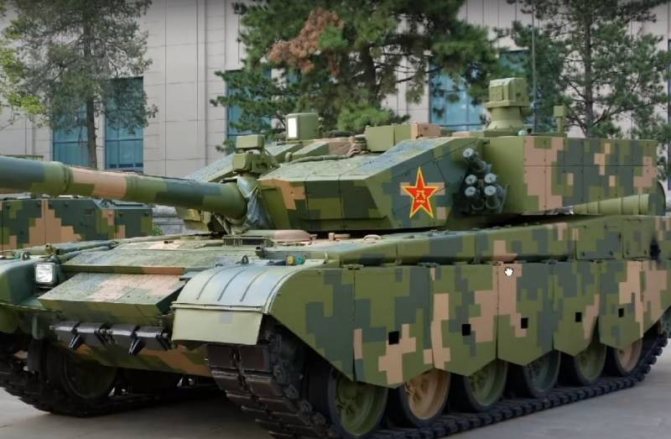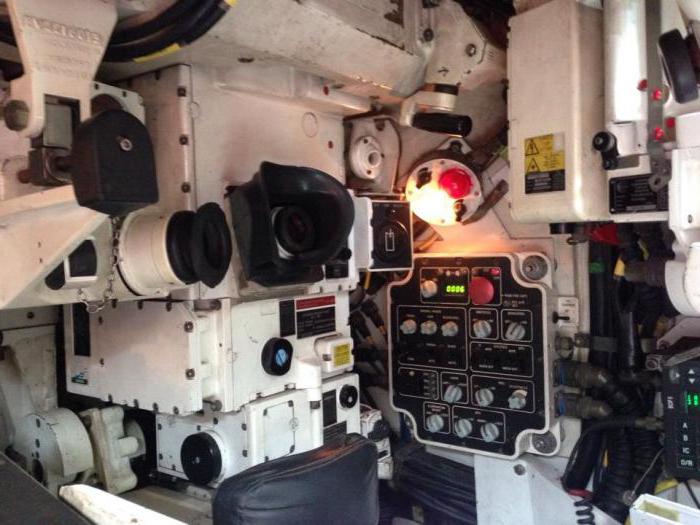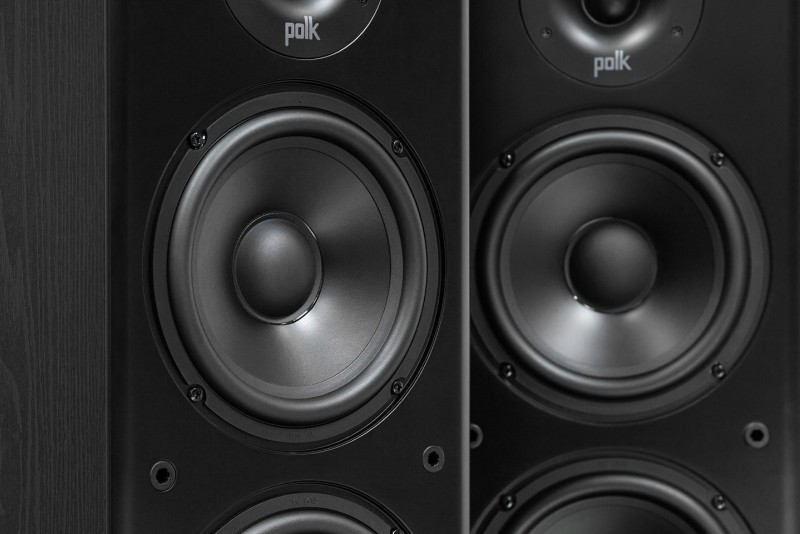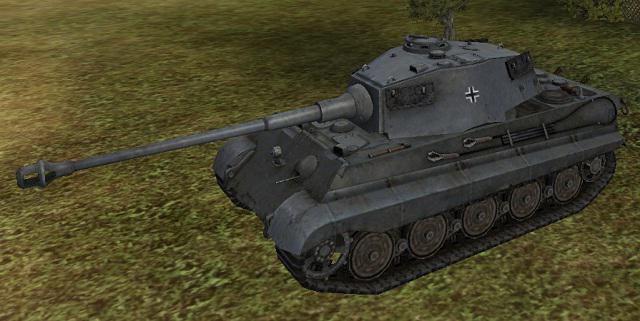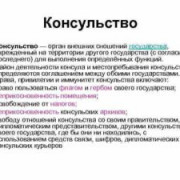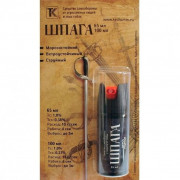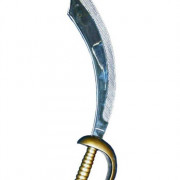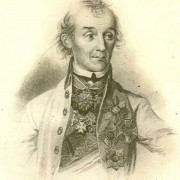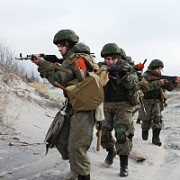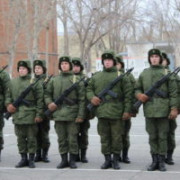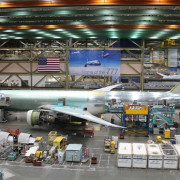Сау «мардер» ii
Содержание:
General info
Survivability and armour
Armour type:
Rolled homogeneous armour
| Armour | Front (Slope angle) | Sides (Slope angle) | Rear | Roof |
|---|---|---|---|---|
| Hull | 50 mm (19°) Front plate 12 mm (74°) Front glacis 50 mm (13°) Lower glacis | 16 mm Upper 15 mm Lower | 15 mm | 12 mm |
| Turret | 11 + 8 mm (31°) | 11 mm (8-9°) | N/A | N/A |
Notes:
- Belly armour (under the tank) is 15 mm thick.
- Suspension wheels and tracks are 15 mm thick.
- Aside from the front gun shield, there is no armoured encasement for the gunner and loader crew members.
- The vehicle is so lightly armoured that it is extremely vulnerable to artillery strikes, plane strafings, ramming attacks and light machine gun fire.
Mobility
| Game Mode | Max Speed (km/h) | Weight (tons) | Engine power (horsepower) | Power-to-weight ratio (hp/ton) | |||
|---|---|---|---|---|---|---|---|
| Forward | Reverse | Stock | Upgraded | Stock | Upgraded | ||
| Arcade | 46 | 6 | 11.3 | 227 | 305 | 20.09 | 26.99 |
| Realistic | 42 | 6 | 142 | 160 | 12.57 | 14.16 |
Программы по модернизации БМП Marder.
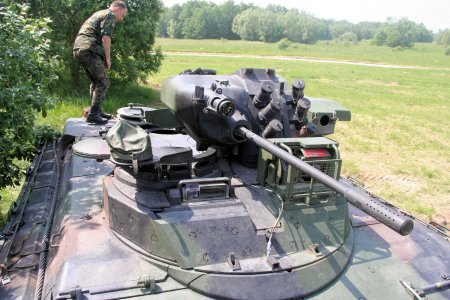
В 1975 году ракета «Милан» стала штатной противотанковой системой БМП «Мардер». В последствии проводились ряд программ по модернизации, которые включала установку прицелов ночного видения и тепловизор, а также модернизированную подачу боеприпасов к 20-мм пушке. В 1985 году на вооружение Бундесвера принимается танк, Leopard-II и обозначение БМП было изменено на Marder-II (до этого она была просто Marder) и продолжает выпускаться и модернизироваться.
Поскольку новый танк и БМП должны были действовать совместно (партнеры по бою), так же, как Marder была спутником в Standardpanzer/Leopard I, то со сменой танка для БМП ничего в тактике применения не изменилось. Процесс модернизации машины на этом не остановился, а только приобрел темпы. Это повлияло и на название машины, потому что с течением времени вернулись к цифре I, а уровень модернизации начали обозначать буквой «А», например, А1, 2 или 3.
Программа модернизации A3 началось в 1988 году, с компанией Тиссен-Хеншель, которой доверили контракт на модернизацию 2100 Мардер I A1/A2 до уровня A3 с темпами модернизации 220 в год. Первые модернизированные БМП А3 достигли немецкую армию 17 ноября 1989 года. Пакет модификации включал:
- – улучшенная броня весом 1600 кг, предназначенная для защиты от 30 мм пушки 2А42 советской БМП-2. Броня также давала дополнительную защиту от мин кассетных боеприпасов;
- – были пересмотрены люки для пехотного отделения;
- – усиленная подвеска, была установлена новая система торможения и коробка передач. Система электрического отопления была заменена системой водяного отопления;
- – была изменена башня.
Общий вес БМП А3 в результате модернизации составил 35 000 кг. Всего с 1988 года существуют следующие типы модернизации машины:
- – «Marder» 1А3 – основное транспортное средство пехоты;
- – «Marder» 1А4 – отличается от А3 только наличием блоков криптографии для радиостанции, внешне от А3 – неотличима;
- – «Marder» 1А5 – та же А3 только с более современной противоминной защитой днища.
Германская «БМП» и ее концепция.
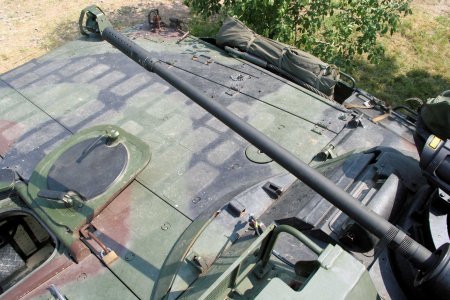
Теперь несколько слов о самой Германской «БМП» и ее концепции.
Одной из интересных особенностей немецкого языка заключается в том, что слово сочетаниями «боевая машина пехоты» и«бронетранспортер» нет смысловой разницы. Для немецких ВОЕННЫХ нет такого понятия, как «боевая машина пехоты» вообще, в том контексте понимания, к которому этому словосочетанию относились на пространстве бывшего СССР.
Немецкая БМП «Marder» только подвозит воинов к месту боя, в бою она принимает участие очень ограниченное или не принимает его во все. Принимает участие, если разведкой выявлено то, что противник слаб и имеет небольшое количество противотанковых средств. В противном случае БМП находятся в естественных укрытиях или занимаются подвозом всего необходимого для боя (продуктов, эвакуацией раненных, боеприпасов, приборов и т.д).
Концепция по которой разрабатывалась БМП «Marder» полностью совпадает с концепцией Panzertruppen Второй мировой войны. О которой постоянно думали немецкие генералы, это то обстоятельство, чтобы пехота всегда действовала совместно с танками. Но при этом, пехота должна иметь такую же скорость передвижения, как и танки. Перемещаться не десантом и не на броне, а под броней. Внешне, ничего сложного. Однако, в СССР данную концепцию не поняли и ничего равного «Marder» создано не было.
History
Development
After the start of Operation Barbarossa, the Wehrmacht found a very dire problem of the lack of a mobile anti-tank system and adequate anti-tank weapons, especially after the appearance of the Soviet T-34 and KV-1 tanks. The only mass-issued anti-tank was the fairly weak 37 mm Pak 36 and the only mobile anti-tank system widely used was the Panzerjäger I with the Czech 47 mm anti-tank gun. Modifications to current vehicles in service was done to put more self-propelled anti-tank weapons into service, which created the Marder I from the French Lorraine, the Marder II from the Panzer IIs, and the Marder III from the Czech Panzer 38(t).
Specifications
The Marder III, with the rest of the Marder series, gave Germany forces a self-propelled gun mounting a better gun than what was available on German tanks, such as the 75 mm Pak 40 or captured Soviet 76.2 mm guns chambered for the Pak 40 ammo. All of the Marders share a lack of armour for the crew, the top and rear of the vehicle is left exposed to mortar, shrapnel, or infantry weapons. This weakness is mitigated with the fact that the Marders are supposed to be anti-tank motor carriages that are to ambush incoming enemy tanks.
The Marder III use the Panzer 38(t) as it was a design going obsolete, and lots of Soviet 76.2 mm guns were captured, so they mounted these guns onto the Panzer 38(t) first. The finished self-propelled mount had a higher silhouette than the Panzer 38(t), which left it more vulnerable, but had a rechambered 76.2 mm Pak 36(r) gun with the Pak 40 ammo and could hold 30 rounds in the vehicle. A machine gun on the hull was retained for anti-infantry purposes.
The Marder III with a 75 mm Pak 40 gun mounted instead of the rechambered 76.2 guns was called the Marder III Ausf. H. Another variant created, the Ausf. M, featured a lower silhouette and a better-sloped armour and fighting compartment, despite only holding 27 rounds for the mounted Pak 40. A total of 3,472 Marder IIIs and its version was created or converted from Panzer 38(t) during its production life.
Combat usage
The Marder III fought on all front of the war, being produced from 1942 to 1945, with 2,080 Marder III with the 76.2 mm gun converted and produced. Using the tested design of the Panzer 38(t), the Marder III experienced a reliable mechanical history and has a gun that could take out most allied tanks in the war. The vulnerability to the crew due to lack of armour was its most pressing issue, with only a front shield plate at most 15 mm thick and side plates that can’t enclose the crew. This makes it as very poor assault vehicles or tank substitutes as the open top could allow infantry to easily kill the crew from hidden areas, despite that, it is sometimes repurposed to this role to the chagrin of the crew.
As its production was underway, Germany already had a few self-propelled assault weapons being produced such as the StuG III that could have the same anti-tank capabilities, yet was fully-armoured, enclosing the crew in adequate armour. This obvious advantage over the open Marder series encouraged the development of a new kind of tank destroyer from the Panzer 38(t) with better armour, which will eventually create the Jagdpanzer 38(t). Despite that, the Marders continued to serve to the end of the war.
In-game description
An antitank vehicle designed on the basis of the Pz.38(t) tank by the BMM company (formerly ChKD) by installing a 76.2mm F-22 division cannon on the chassis of a captured Soviet tank that had been modified by German engineers. The impetus for building this platform was the fact that in 1941 it became clear on the Eastern Front that the Wehrmacht did not have the means to fight Soviet heavy tanks. At the time, the captured 76.2mm F-22 division cannon was able to fight these tanks, so they decided to install it on the reliable frame of the Pz.38(t). BMM produced 344 of these antitank vehicles.
Варианты
— неподвижная открытая рубка расположенная в середине с 50-мм пушкой Pak.38 L/60 и 7,9-мм пулеметом MG.34 на шасси легкого танка Pz.Kpfw.II Ausf.A\B\C\F.
7,5 cm PaK.40/2 auf Fahrgestell Pz.Kpfw.II (Sf), Sd.Kfz.131 (Marder II)
— неподвижная открытая рубка расположенная в середине с 75-мм пушкой Pak.40/2 L/46 и 7,9-мм пулеметом MG.34 на шасси легкого танка Pz.Kpfw.II Ausf.A\B\C\D\F.
7,62-cm-Pak (r) auf Fahrgestell Pz.Kpfw.II (Sf), Sd Kfz132 (Marder II)
— неподвижная открытая рубка с 76-мм пушкой Pak.36(r) (Pz Sfl) L/51.5 и 7,9-мм пулеметом MG.34 на шасси легкого танка Pz.Kpfw.II Ausf.D\E.
Производство
7,62-cm-Pak(r) auf Fahrgestell Pz.Kpfw.II (Sf), Sd Kfz132
1942
апрель — 60
май — 90
Еще 52 машины были переделаны из вернувшихся с фронта огнеметных танков Pz.Kpfw.II(F):
июнь — 13
июль — 9
сентябрь — 15
октябрь — 7
1943
май — 4
июнь — 4
Итого — 202
7,5 cm PaK.40/2 auf Fahrgestell Pz.Kpfw.II (Sf), Sd.Kfz.131
1942
июль — 18
август — 50
сентябрь — 55
октябрь — 59
ноябрь — 62
декабрь — 83
1943
январь — 80
февраль — 45
май — 46
июнь — 33
Кроме того, с января 1943 по январь 1944 в эти САУ были переделаны примерно 130 Pz.Kpfw.II Ausf.c-C и Ausf.F:
1943
январь — 10
февраль — 15
апрель — 12
май — 14
июнь — 12
июль — 12
август — 3
сентябрь — 22
октябрь — 13
декабрь — 5
1944
январь — 1
Помимо заводов, переделывали танки в самоходные установки и в частях. Наибольший интерес в данном случае представляет конверсия, произведенная силами 559-го батальона истребителей танков летом 1943 года. С 7 по 13 июня в батальон передали 10 Pz.Kpfw.II из состава 12-й танковой дивизии. Орудий 7,5 cm Pak 40 на все машины не хватило, в результате появился интересный гибрид, известный как 5 cm Pak 38 auf Fg.St. Pz.Kpfw.II (Sf). На шасси Pz.Kpfw.II Ausf.F взгромоздили противотанковую пушку Pak 38 вместе со штатным щитом, причем не просто качающуюся часть, а вместе с лафетом, но без станин и колес. Получившуюся конструкцию «обшили» спереди и с боков. Боезапас разместили в специальных ящиках на надмоторной плите. Судя по имеющимся фотографиям, подобных переделок было несколько.
Таким образом было изготовлено на заводах FAMO и Ursus и переделано из линейных танков на MAN и Škoda около 660 7.5 cm Pak 40/2 auf Sfl.II
Marder II в Бронетанковом музее в Кубинке
Историческое фото
Usage in battles
- Offensive role
The Marder III should be played as a long range sniper, taking advantage of the APCBC shell’s high penetration values, high gun accuracy and good mobility. Find a shooting spot and engage targets from at least 1,000 m away to prevent enemy progress towards the objectives. You will also suppress enemy fire to prevent your team from being pinned down by enemy snipers attempting the same in return. Because of your weak armour and open turret, always stay away from the frontline to avoid being flanked or swarmed and thus maximise your chances of survival. When engaging enemy tanks, prioritise firing hull-down from behind cover. With such firepower, any enemy wandering in your sight alone is practically dead. A flanking enemy, artillery strikes or CAS will be the greatest threats to the Marder III.
- Defensive role
In case of an enemy breakthrough, your role is to contain the enemy advance by pinning them down. The enemy will be moving the front line, so engagements will take place at a closer range than you’re comfortable with. You should identify and target in priority choke points, narrow passages and corridors of the map that the enemy will be forced to take. Your limited gun traverse still allows you to monitor an area spanning 350 m at 1,000 m distance without having to reposition your hull.
- Other roles
If you try to use the Marder III in a different role on the battlefield, you will be confronting with the following:
If you try to play the Marder III as a front-line tank, you will be quickly disabled by any type of fire coming from enemy tanks. Your armour is extremely thin and your open turret crew is very exposed to MG fire, artillery strike, HE shells blast or ramming attacks. Your turning speed is also too poor to manoeuvre quickly enough in close combat.
If you attempt to play support tank, your poor reverse speed will make it difficult for you to overextend. Your high profile will make it difficult to stay hidden behind obstacles without taking fire. The enemy will flush you out with artillery strike (which can be accurate enough from middle ranges to disable you). Even with an escape route planned and cover to hide behind, your chances of survival are meagre. You will also be at risk of being flanked by light tanks or armoured cars, especially if they swarm you. Anyone who manages to get behind you has a very high chance to destroy you, even with just machine gun fire.
- Notable enemies
- Any tank will disable you with little effort in a close range encounter because of your weak armour.
- For long range engagements, T-34s & M4s are the enemies most likely to bounce your shell if they are properly angling from a distance.
- Defeating a Marder III
- If you are alone, flanking a Marder III undetected remains your best chance to destroy it. But it is difficult because the Marder positions itself very far from the frontline.
- Force the Marder III out of position with indirect fire (artillery strikes) if you’re at relative close range.
- The most suitable shells to deal with a Marder are HE, HEAT or Shrapnel shells.
- In case of a frontal attack (choke point/corridor), try blinding the Marder III with smoke and then swarm it with several tanks to saturate its defensive capacities. A barrage of MG fire is very likely to make a Marder III retreat and relocate.
Modules
| Tier | Mobility | Protection | Firepower | |||
|---|---|---|---|---|---|---|
| I | Tracks | Parts | Horizontal Drive | |||
| II | Suspension | Brake System | FPE | HLGr 38C | Adjustment of Fire | |
| III | Filters | Crew Replenishment | PzGr 40 | Elevation Mechanism | Smoke grenade | |
| IV | Transmission | Engine |
Which modules to unlock first:
- Parts and FPE — Mandatory first 2 upgrades, to guarantee your survival.
- Modules related to gun accuracy and targeting quality: Horizontal Drive, Adjustment of Fire & Elevation Mechanism.
- Modules related to mobility: Tracks, Suspension, Brake System, Filters, Engine, Transmission.
- Smoke grenade and Crew Replenishment, to increase your survivability.
- Research the shells last, the stock shell offering the best post-penetration damage.
Pros and cons
Pros:
- Good gun penetration
- Powerful at all ranges
- Relatively high forward speed
- Relatively good HE filler in APCBC rounds
- Average hull armour of 50 mm
- Capable of penetrating all tanks frontally at its BR range (1.7-3.7)
- High capacity spotting machine gun in the hull
Cons:
- Tall profile, hindering concealment ability
- Slow turning movement
- Very prone to falling over due to height, especially for newer players with low amounts of invested crew points towards driver
- Very thin gun shield for the gun crew
- Open top vehicle, gunner and loader can be easily machine-gunned
- Vehicle can be hull broken
- Will struggle against heavily sloped armour due to penetration drop-off with increasing angle-of-attack
Модификации
- SPz NEU — десять предсерийных образцов, выпущенных в период с октября 1968 по март 1969 года. Оснащены шестицилиндровым многотопливным двигателем «Даймлер-Бенц» MB833Ea (600 л.с.).
- «Marder» (после 1985 года название изменено на «Marder-1») — первая серийная модель, производилась с 1970 по 1975 год (всего выпущено 2136 машин). Боекомплект изначально составлял 1250 20-мм патронов и 2500 патронов к пулемётам.
- «Marder» с установленной на башне пусковой установкой ПТУР «Милан». Модификация разработана в 1975 году, в период с 1977 по 1979 годы ПТУР были установлены на все 2136 машин. В боекомплект включены шесть ПТУР «Милан».
- Marder 1 A1 — модернизированный вариант, разработанный в 1979—1980 годы и поставленный в производство в 1981—1982 годы. Электромеханический механизм поворота башни был заменен на более мощный. 20-мм пушка была снабжена механизмом селективного питания, позволяющим переходить от ведения огня осколочно-фугасными снарядами к стрельбе бронебойными снарядами. В боекомплект к пушке был введен выстрел с бронебойным подкалиберным снарядом DM63, кроме того, боекомплект был увеличен до 1284 выстрелов (из них 317 бронебойных). Около 1000 машин планировалось оснастить пассивным инфракрасным прицелом с тепловизионным индикатором, однако фактически он был установлен на 674 машины.
- Marder 1 A1A3 — Marder 1 A1 с новой радиостанцией SEM 80/90.
- Marder 1 A2 — вариант модернизации, проведенной в 1984—1991 годы.
- Marder 1 A2A1 — Marder 1 A2 с новой радиостанцией SEM 80/90.
- Marder 1 A3 — модификация 1989 года. Масса бронирования увеличена на 1600 кг с целью:
- — непоражаемости машины в переднем секторе обстрела БПС снарядами 30-мм пушки БМП-2;
- — для усиления защита горизонтальных поверхностей (крыши корпуса и башни) от поражения кумулятивными боевыми элементами кассетных боеприпасов за счёт использования разнесенной брони.
- Marder 1 A4 — вариант Marder 1 A3 с новой криптографической радиостанцией SEM 93.
- Marder 1 A5 — модернизированный вариант Marder 1 A3, разработанный в 2003–2004 гг. Установлена дополнительная противоминная защита, полностью изменён интерьер с целью уменьшения повреждений экипажа и десанта в случае подрыва на мине. В ходе модернизации было обновлено 74 машины Marder 1 A3.
- Marder 1 A5А1 — модернизированный вариант Marder 1 A5, разработанный в 2010–2011 гг. Установлена система кондиционирования воздуха, мультиспектральное камуфлирование корпуса и системы РЭБ. Модернизации подверглось около 35 едииниц.
Также, на базе «Marder» были созданы и приняты на вооружение бундесвера:
- самоходный ЗРК Roland с двумя ракетами в положении готовности и восемью в резерве
- машина наблюдения с радаром на гидравлически управляемом основании.
БМП «Мардер-1»
Материал корпусов «Мардер-1» — это листовая бронесталь. Отсек управления с рабочим местом для механика-водителя находится слева от носовой части, а справа — моторно-трансмиссионный отсек. Сзади водителя может находиться один боец. Кормовая часть — десантный отсек, вход в который через аппарели с гидроприводом.

БМП имеет четырехтактный шестицилиндровый V-образный многотопливный дизель от «Даймлер-Бенца», мощностью 600 л. с. и турбонаддув. Боевой и десантный отсеки оснащены тремя топливными баками с общим объемом более 650 литров. Этого хватит более чем на 600 км при движении по высококачественным немецким автобанам. Гидромеханическую трансмиссию «Ренк» установили впереди двигателя. Она обладает гидродинамическим трансформатором и гидростатическим редуктором, смонтированными в единый блок.
Планетарная коробка передач и гидротрансформатор на входе имеют реверсный механизм. Гидротрансформатор уменьшает нагрузку на трансмиссионных деталях и узлах, однако не обладает высоким КПД. Из-за его дополнительного тепловыделения и снижения запаса хода, он включается только при трогании с места, движении по бездорожью и при переключении передач, остальные режимы блокируются. КПП обеспечиваются четырьмя передачами вперед-назад, переключения совершаются с помощью электрогидравлического привода.
БМП «Мардер-1» имеет различные модификации:
- «Мардер-1A2», имеющий тепловизионные системы наблюдения, систему стабилизации орудия по двум плоскостям, усовершенствованные баки и систему охлаждения мотора;
- «Мардер-1A3» с усилением бронезащиты;
- «Мардер-1A5» с усилением защиты от поражения при минных разрывах.
Также существуют и промежуточные модификации, отличающихся преимущественно своим радиооборудованием.

В 2009—2010 года бундесвером были задействованы некоторые «Мардеры» в боевых действиях на территории Афганистана.
Marder III
| Модель | «Marder» III | ||
| Войсковой индекс | Sd.Kfz.138 (H) | Sd.Kfz.138 (M) | Sd.Kfz.139 |
| Производитель | «BMM» | «BMM»,»Skoda» | «BMM», «Skoda» |
| Шасси | PzKpfw 38(t) | GW 38(t) | PzKpfw 38(t) |
| Боевой вес, кг | 10 600 | 10 500 | 11 300 |
| Экипаж,чел | 4 | 4 | 4 |
| Скорость, км/ч | |||
| — по шоссе | 47 | 45 | 42 |
| — по проселку | 28 | 25 | |
| Запас хода, км | |||
| — на шоссе | 200 | 210 | 210 |
| — на местности | 120 | 140 | 140 |
| Емкость бензобака, л | 218 | 218 | 218 |
| Длина, мм | 5 680 | 4 850 | 6 250 |
| Ширина, мм | 2 150 | 2 150 | 2 150 |
| Высота, мм | 2 350 | 2 430 | 2 530 |
| Клиренс, мм | 380 | 380 | 380 |
| Ширина гусеницы, мм | 293 | 293 | 293 |
| Двигатель | «Praga» AC/2800 | «Praga» AC/2800 | «Praga» AC/2800 |
| Мощность, л.с. | 160 | 160 | 160 |
| Частота, об/мин | 2 800 | 2 800 | 2 800 |
| Орудие, тип | PaK40/3 | PaK40/3 | PaK36(r) |
| Калибр, мм | 75 | 75 | 76,2 |
| Длина ствола, кал, | 46* | 46* | 54,8 |
| Нач. скорость снаряда, м/с | |||
| — бронебойного | 750 | 750 | 740 |
| — подкалиберного | 933 | 933 | 960 |
| Боекомплект, выстр. | |||
| Пулеметы, кол-во х тип | 1xMG-34 | 1xMG-34 | 1xMG-34 |
| Калибр, мм | 7,92 | 7,92 | 7,92 |
| Боекомплект, патронов | 600 | 600 |
* — Приводится длина ствола с учетом дульного тормоза. Реально ствол длиной 43 калибра
Description
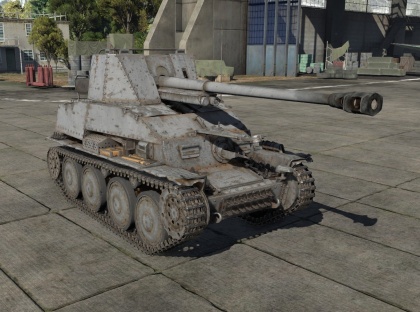
The Marder III is a rank II German tank destroyer
with a battle rating of 2.7 (AB/RB/SB). It was introduced in Update 1.43.
The armour of the Marder is its biggest fault. Because it is open-topped, strafing runs from fighter planes can disable the crew very easily, even leading to ammo detonation! Enemy tanks only have this privilege because of poor positioning of the Marder, or because of a highly exploited breakthrough of allied defences. The front turret armour is also very thin and is vulnerable to basically any weapon save most 7.62 mm MGs. The hull armour at the front is rather thick at 50mm and is decently sloped for a tank destroyer. It still should not be relied on heavily, but if angled correctly it can be used to deflect British 2 pdr. guns, German, US and Russian 37 mm and sometimes 50 mm guns, as well as most ammunition used by the KV-1 series of tanks.
The Marder also has surprisingly poor manoeuvrability for a small tank destroyer. Being based on the Pz.38(t) chassis, forward turning abilities slow the tank down significantly and neutral turning leaves a lot to be desired. The fact that the Marder has a forward facing gun with no turret means that it is required for the whole vehicle to turn to align the gun onto target if out of its arc of fire. Therefore, it is highly recommended to play with a squadmate or more mobile player, as the mobility of the Marder can significantly hamper urban combat abilities. Use the high speed of the Marder to reach a comfortable shooting position and stay there- the poor traverse and turning speed is fatal against nearly all turreted vehicles, along with the very poor armour.
However, the Marder makes up for most of these drawbacks with its high velocity, high damage 76 mm cannon. It can OHK every single tank within the 1.7-3.7 BR range. Whether it be a Sherman, T-34, or Churchill, no UFP (upper front plate) is safe. Ballistics are very similar to all other 75mm long guns in the German line (IV F2, Marder III H, etc.), and thus experienced German tankers should not have issues assimilating to the Marder’s cannon.
БМП «Мардер-2»
В 1985-ом году германским министерством обороны было объявлено среди программ имеющих приоритетные направления о разработке боевой машины пехоты нового образца — «Mардер-2». Необходимость в боевых машинах оценили тогда в 2,5 тысяч единиц. В 1988-ом году компанией Krauss-Maffei был получен заказ, подтвержденный контрактом по разработке нового образца. В начале осени, в 1991-ом году прошла демонстрация первых прототипов БМП с наименованием «Mардер-2».
Машину многое отличало от предыдущего варианта. Механик-водитель располагался теперь справа в передней части, а командир БМП с наводчиком-оператором расположились в сравнительно вместительной башне с той же конструкцией, первый с правой стороны от орудия, а второй — с левой. Десантный отсек вместил в себя семь военнослужащих с полным боевым снаряжением.
Масса машины достигает 42 тонн, а это уже соответствие массе многих основных танков. «Мардер-2» оснастили дизелем компании MTU с мощностью почти 1000 л.с. Двигатель с гидромеханической трансмиссией, располагает гидрокинетическими передачами, коробкой передач планетарного типа, сумматорами и механизмом поворотов. Все это является единым блоком, постоянно контролируемым и регулируемым компьютерной системой.
https://youtube.com/watch?v=wK5ZYVotL2M
В ходовой части БПМ имеется шесть пар колес с двойными обрезиненными опорными катками, и поддерживающими роликами, и ведущие колеса, расположенные впереди, а также направляюще колеса, расположенные сзади и резинометаллические гусеницы. Подвеска оборудована торсионными валами.
На «Мардерах-2» установлены автоматические пушки Rh503 Mk35/50. Орудие укомплектовано стволами в количестве двух единиц, калибров 35 и 50 мм, быстро заменяемыми при особой надобности. В сравнении с «Мардером-1» на втором была значительно усилена огневая мощь. Вся механика, связанная с автоматикой орудия, оснащена электрическими приводами. Энергия пороховых газов применяется только для стрельбы снарядами.
Огонь пушкой мог вестись как в одиночном режиме, так и очередью. Боевая скорострельность регулировалась в пределах от 150 до 400 выстрелов в минуту. Заряжалась пушка с обеих сторон. Стрельбы велись с помощью специально разработанных унитарных боеприпасов. Это стабилизирующиеся в полете подкалиберные трассирующие и осколочно-фугасные снаряды.
Дополнительным вооружением в боевой машине пехоты «Мардер-2» является:
- Пусковая установка ПТУР противотанковых управляемых ракет (ПТУР «Милан»);
- Пулемет с калибром 7.62 мм;
- Дымовые гранатометы численностью десять единиц.
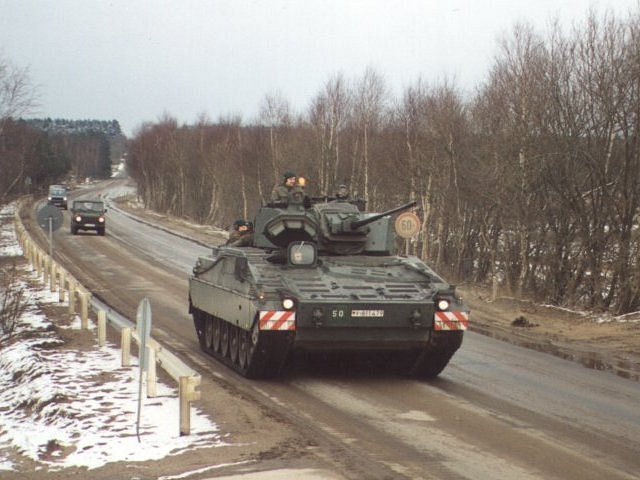
Чтобы успешно противостоять противнику с сильно бронированной боевой техникой, на «Мардерах-2» специально был установлен ПТРК третьего поколения PARS-3MR. Противотанковые ракеты указанного комплекса обладают лазерной системой наведения с тандемной кумулятивной боевой частью.

Автор статьи:
Богуславский Сергей
Я бывший военнослужащий, офицер, и военная тематика мне близка, я в ней легко ориентируюсь.
Источники
- Н. Мишин. Модернизация БМП «Мардер» // «Зарубежное военное обозрение», № 2, 1981, стр.88
- International Institute for Strategic Studies. The Military Balance 2016 / James Hackett. — London: Taylor&Francis, 2016. — С. 101. — ISBN 9781857438352.
- International Institute for Strategic Studies. The Military Balance 2016 / James Hackett. — London: Taylor&Francis, 2016. — С. 257. — ISBN 9781857438352.
- International Institute for Strategic Studies. The Military Balance 2016 / James Hackett. — London: Taylor&Francis, 2016. — С. 386. — ISBN 9781857438352.
Главный редактор — Крис Бишоп. «Современная боевая техника». стр 46
Did You Know?
Trivia
Bears a passing resemblance to the Tommy and Tuppence Beresford series of novels by Agatha Christie in which a married couple find themselves mixed up in all kinds of mysteries, they have money trouble, and the wife is much more engaged in the mystery than the husband is. A major difference between Tommy and Tuppence and the main characters here, is that Tommy and Tuppence are often out of work or changing jobs, and in this film Nick and Audrey’s careers are central to their characters. David Walliams appears in this film as Tobey and he appeared as Tommy in Партнёры по преступлению (2015), an adaptation of Tommy and Tuppence stories, which he also produced. See more »
Goofs
While on the yacht heading to Monaco, Juan Carlos Rivera is congratulated for «racing in the Monaco Grand Prix tomorrow.» All drivers are required to be at Monaco no later than the Wednesday before a race on Sunday. There are two practice sessions on the Thursday and a short practice session followed by a qualifying race on the Saturday. See more »
Quotes
Audrey Spitz:
Okay. What’s that?
Charles Cavendish:
That is the Quince dagger. Chinese steel, jewels from across the Orient. A gift to the family from Marco Polo. Or so the legend says.
Audrey Spitz:
God. Nick’s grandmother gave us a toaster from Sears. Or so the legend says.
See more »
HistoryEdit
Development of the Marder ran from January 1960, when the first development contracts were issued, to 7 May 1971, when the first production vehicles were given to the German army.
In 1967, after military requirements were finalized, a third and final set of ten prototypes were built. Final development work was completed by the Rheinstahl group, and 10 pre-production vehicles were built and completed troop trials with the German army between October 1968 and March 1969. In May 1969, the vehicle was officially named the «Marder» and in October Rheinstahl was chosen as the prime contractor.
The first production Marder 1 was handed to the German army on 7 May 1971. Production of the vehicle continued until 1975, with 2,136 vehicles being completed. In 1975 the Milan missile was first adapted to be fired by commander from his open hatch, and between 1977 and 1979 Milan missiles were fitted to army vehicles. A number of upgrade programs were carried out, that included fitting night vision equipment and a thermal imager, as well as an upgraded ammunition feed to the 20 mm cannon.
Around 1985 the designation was changed to Marder-1 (until then it was simply Marder) since a follow-up IFV was under construction. Since the new vehicle should be the partner of the Leopard-II just like Marder was the companion to the Standardpanzer/Leopard I, it was named Marder-2 and the older vehicles re-designated.Prior to the developement of the Bradley fighting vehicle the U.S. Army considered aquiring the Marder.

